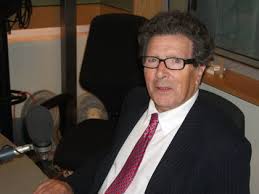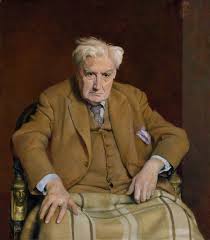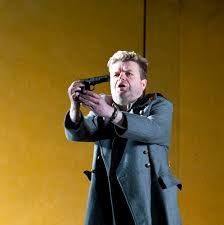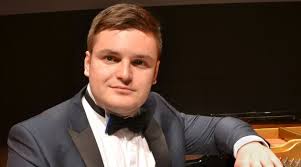INTO THE STARS
FAIRHAVEN SINGERS, conductor RALPH WOODWARD
GUILD GMCD7417 (69’14)
This collection of choral music commissioned for the Fairhaven Singers presents some beautiful music in a range of styles by some well-known contemporary composers. Although I enjoyed all the music here I found the move from the unaccompanied first half to the addition of The Will Todd Trio (piano, bass and drums) rather jarring. I wonder if this would have worked better at the beginning of the CD. The final arrangement of an English folk-song also seemed a little out of place.
SMITH & HANDEL – JULIAN PERKINS, harpsichord
CHANDOS CHACONNE CHAN 0807 (77’50)
This is a lovely combination of unfamiliar music played by a fine musician on an original single manual (c1770) and a modern (1982) double manual harpsichord. The use of the two instruments allows for more variety than in some recordings. The bulk of the CD consists of a premiere recording of music dating from 1755, John Christopher Smith’s Six Suites of Lessons for the Harpsichord, Op 3. This is preceded by an overture by Handel, Riccardo Primo, re d’Inghilterra . Despite loving the sound of the harpsichord I sometimes find a whole CD too much. This is not the case here. A very enjoyable performance.
POWER OF LIFE – CHRISTOPHER HERRICK, Metzler organ, Poblet Monastery, Tarragona, Spain
HYPERION CDA68129 (67’08)
This recording takes its title from the opening track, an energetic composition dedicated to the performer by Mons Leidvin Takle. The Disc is a complete mix of styles but the programme is constructed in such a way that it works incredibly well. Alongside music by Mozart, Dupre, SAont-Saens & Walton are less familiar names – Hans-Andre Stamm, Vincenzo Petrali , Franz Wagner and Marius Monnikendam. There is a beautiful arrangement of Amazing Grace by George Shearing & further arrangements of melodic pieces by Villa-Lobos and Warlock. A highly enjoyable collection.
GREAT EUROPEAN ORGANS No 93
KONSTANTIN VOLOSTNOV, WALCKER organ, Riga Dom, Latvia
PRIORY PRCD 1111
This is a lovely collection of “solid” organ music linking another impressive large-scale organ with expert performances from a Moscow organist and seven preludes and fugues. The Russian composers – Glazunov, Karatygin, Catoire & Goedicke flank a central prelude & fugue of JS Bach (D major, BWV 352). The Russian music dates from the early 20th century and there are clear influences from German organ music. A useful addition highlighting a neglected area of the organ repertoire.
THE COMPLETE ORGAN WORKS OF THOMAS TERTIUS NOBLE Vol 1
JOHN SCOTT WHITELEY, organ of York Minster
PRIORY PRCD 1116
The beginning of another complete works collection provides some interesting music in another set of convincing performances by an organist who knows this instrument well. There are several pieces based on popular hymn tunes, as well as some “light” programme music. Of particular interest are the Pastorale-Prelude on a Chinese Christmas Carol and Two Traditional Hebrew Melodies. The most substantial work is the final track, Introduction & Passacaglia. I look forward to the subsequent volumes.
GREEN & PLEASANT LAND – KEVIN BOWYER, organ of Woburn Parish Church
PRIORY PRCD 1131
This is a very personal project by Kevin Bowyer who, after being asked to give a recital on this organ, was so taken by it that he wanted to make a recording. The music here has been inspired by thoughts of what might have been played by organists who later ended up serving in the First World War, and is taken from a set of volumes of the monthly periodical, The Organ Loft (1900-1915). I really enjoyed this collection of pieces – none of which I had heard before. Interesting biographical notes are included for all the composers. Kevin Bowyer has often introduced listeners to new organ music. He does the same here. It is just that this “new” repertoire dates from a century ago!
SIGFRID KARG-ELERT – The Complete Organ Works Vol 12
STEFAN ENGELS, Steinmeyer organ, Marienkirche, Landau/Pfalz, Germany
PRIORY PRCD 1088 (76’13)
This volume in the continuing series is an enjoyable programme in its own right. Stefan Engels’ masterful playing of this large Romantic organ makes for a very musical recital. This CD comprises three of the composer’s larger works – Trois Impressions Op 72, Partita for organ Op 100 and Homage to Handel Op 75.
L’ORGANO A FIRENZE DAI MEDICI ALL’UNITA D’ITALIA
(Organ music in Florence from the Medici period to Italy’s Unification)
GABRIELE GIACOMELLI, organs of Basilica di San Lorenzo, Firenze
TACTUS TC 860002 (79’03)
This CD presents a wealth of music presented in chronological order from the late 15th Century up to the late 19th Century. Two organs are recorded, dating from 1773 and 1864 respectively. I was particularly interested to hear some of the earlier music. Whilst the performances are all very good I found the overall sound of this disc to be harsh and it quickly became wearing. Perhaps it is my English sensitivity but I expected some of this music to have a gentler feel. It is still an interesting recording but perhaps to be listened to in small doses.
ET IN ARCADIA EGO – Italian Cantatas & Sonatas by Handel, A Scarlatti, Lotti & Mancini
CONCENTUS VII (Emily Atkinson, soprano & instrumentalists)
RESONUS RES10142 (67’16)
A lovely programme of Baroque secular solo cantatas and oboe concertos makes for an enjoyable listening experience. Much of this music is less familiar.
LENNOX BERKELEY – CHAMBER WORKS
BERKELEY ENSEMBLE
RESONUS RES10149 (59’48)
I really enjoyed listening to this disc. The music here deserves to be much better known and appreciated. There are small ensemble pieces including a String Trio, Sonatine (clarinet and piano) and a Sextet. Three pieces for solo viola take the listener into a different sound world. The Introduction and Allegro is for the unusual combination of double-bass and piano. In memoriam Igor Stravinsky (for String Quartet) gives an insight into one of Berkeley’s influences. The short Piece for flute, clarinet and bassoon provides a lovely way in to this programme.
SP June 2015




